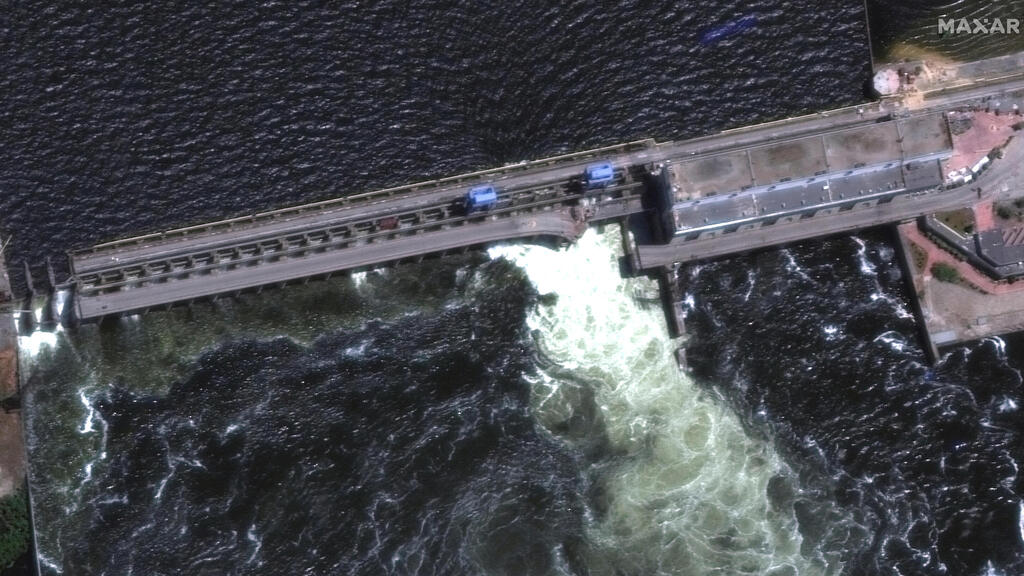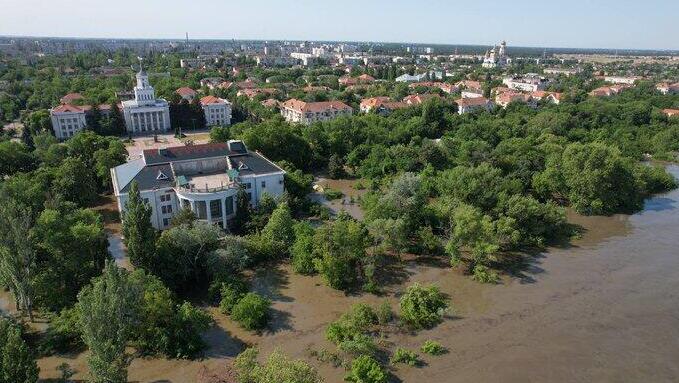Flooding caused by the explosion of the Kakhovka dam
The massive explosion of the Kakhovka dam on the Dnipro River in Ukraine appears to mark the beginning of a new phase in the war in Ukraine. Both the Russians and Ukrainians accuse each other of the dam explosion, but it is reasonable to assume that the Russians were the ones who detonated it to halt the large-scale counterattack that the Ukrainians initiated a few days ago.
Other stories:
The Russians are concerned that Ukrainian forces, located around the city of Kherson on the western bank of the Dnipro River, will cross the river and attack the extensive defensive system that the Russians have established on the eastern bank. This defensive system is intended to protect several areas that the Russians have occupied, including the Zaporizhia region and part of the Kherson region, located beyond the river.
The flooding caused by the explosion of the dam may hinder the movement of Ukrainian forces southward to launch a counterattack and retake the Crimean Peninsula, which was annexed by Russia in 2014. The rapidly flowing waters now pose a threat of flooding the islands located in the center of the mighty river, which are among the largest in Europe, as well as villages and towns located downstream from the dam.
While the Russians claim that the Kakhovka dam was detonated due to Ukrainian shelling, this claim appears absurd for a simple reason – the massive hydroelectric dam, constructed by the Soviets in 1956, spans 3.2 kilometers and is made of reinforced concrete that cannot be destroyed by shelling or even an aerial bombing. Only a planned explosion of significant magnitude, carried out through military engineering methods, could cause a massive breach in the dam, allowing immense amounts of water to flow downstream.
The breach in the Kakhovka dam
The water held back by the dam is also used, among other purposes, for cooling the nuclear reactors that generate electricity near the city of Zaporizhia, which the Russians captured from the Ukrainians over a year ago in the first months of the war.
However, a Ukrainian official working with the Russian forces reassures and says that there is no danger to the proper operation of the nuclear reactors, and they are not at risk of losing their vital cooling water supply which would prevent a disaster like the one that occurred in Chernobyl in 1986. Regardless, the ecological and humanitarian disaster of rapidly flooding waters down the Dnipro River is severe enough in itself, even if a nuclear disaster is not imminent.
The dam's explosion reflects how concerned the Russians are about the Ukrainian counterattack and that they are willing to go as far as to risk unanimous international condemnation, which indeed swiftly followed the incident when the President of the European Council, Charles Michel, referred to it as a "war crime."
Sources in the United States and the UK have stated that the long-anticipated major counteroffensive has already begun. However, the Ukrainian government has not yet confirmed this, and Ukrainian Defense Minister Oleksii Reznikov openly stated that his county currently prefers not to confirm or deny this in order to prevent the Russians from knowing where the counterattack has been launched or its intended targets.
Nonetheless, the detonation of the Kakhovka dam indicates that the Russians believe that the main effort of the Ukrainians in the counteroffensive will be in the Kherson and Zaporizhia regions in eastern-central Ukraine, toward the Crimean Peninsula. The Russians have constructed an immense defensive system in these areas, including concrete tank obstacles, metal barriers and extensive minefields. All of these measures were taken to hinder a Ukrainian attack involving tanks and infantry forces moving toward the territories that Russia has annexed in Crimea, and in the Zaporizhia and Kherson regions.
Meanwhile, there doesn't seem to be any sign that the Ukrainians are attacking in this area. Instead, they are focusing their attacks in the north, beyond the Donbas region, where a battle took place yesterday between pro-Russian militias and Ukrainian brigades near the city of Bakhmut. The Russians claim to have repelled this attack and killed around 250 Ukrainian soldiers, but the Ukrainian military headquarters denies this.
In any case, it appears that the Ukrainians are trying to deceive the Russians or keep them in the dark about their main effort in the counteroffensive attack. Still, the Russians believe that the Ukrainians will attempt to cross the Dnipro River eastward and seize control of the Kherson, Zaporizhia and Crimea regions. Therefore, they took the extreme measure of detonating the Kakhovka dam.
The flooding of the territories south of the dam will indeed pose a significant challenge for the Ukrainian military, especially for its armored forces, to conduct offensive operations in these areas and cross the Dnipro River eastward and southward. The Ukrainian counteroffensive must achieve results within four to five months, during the relatively dry summer period that allows for rapid and maneuverable armored vehicle operations, without being limited to the main traffic routes where the Russians have constructed their defense systems.





